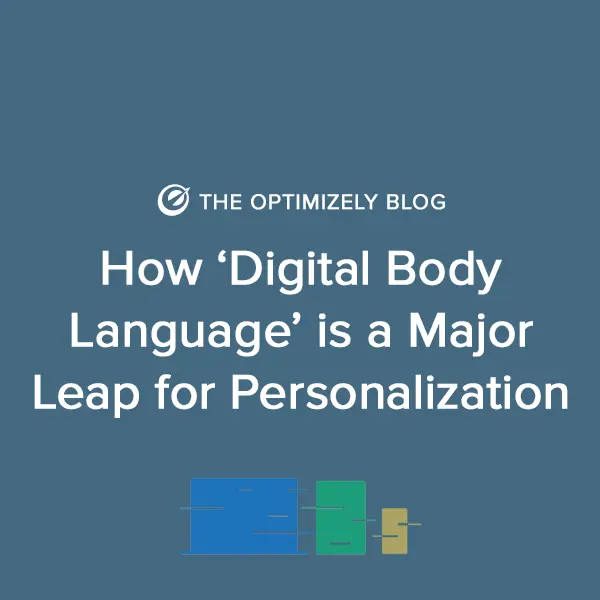How ‘Digital Body Language’ is a Major Leap for Personalization
Personalization has been one of the hottest trends to hit the marketing industry in history, with experts left, right and centre touting it as one of the key drivers towards customer experience, brand loyalty and better profit margins.

Liraz Margalit

Personalization has been one of the hottest trends to hit the marketing industry in history, with experts left, right and centre touting it as one of the key drivers towards customer experience, brand loyalty and better profit margins.
Studies have shown that effective personalization can lift revenues by as much as 15%, so it’s no wonder organizations have been trying to harness the right technology to jump on the trend. The problem, though, is that doing personalization right is a huge challenge in terms of getting the right skillset together, amassing the right budget for the job, and deciding which technologies to combine for the best possible results.
Traditional personalization works fine
For a lot of brands, traditional personalization is doing a good job of providing minor improvements with regards to the customer experience, translating those improvements into small but tangible purchases and results. While it’s fair to say that most of those that have dabbled in personalization have found it a challenge, it’s easy to see why many may be struggling. Traditional personalization relies almost exclusively on what a customer buys — and while that information is obviously very useful, it does not provide an insight into the mindset they were in when buying.
For example, it doesn’t consider the consumer’s state of mind when they visit that particular website or make a particular purchase decision. The experience is the same (albeit personalized) whatever mood the customer is in, whether they’re looking for something specific or just browsing, or whether they’re buying something for themselves or someone else.
But better personalization requires a better understanding of behavior
To take personalization to the next level, brands must attempt to develop a deeper understanding their consumer’s state of mind as they access goods and services on a digital touchpoint. State of mind is important because not all customer decision making takes place in a repeatable, logical pattern. In a recent study by Clicktale, it was found that three quarters (76%) of big data professionals admit that consumers are fundamentally irrational when they shop; as a result, analyzing only what consumers have bought in the past cannot provide the level of accurate insight needed to guarantee a conversion.
By considering the consumer’s psychology, and examining the demands, behaviors and moods that they exhibit as they interact with a site, brands can personalize experiences much more effectively — just like a sales assistant in a shop will behave differently to a customer who is visibly frustrated and one that is just browsing for a good deal.
We at Clicktale call this tapping into a consumer’s ‘digital body language’. Digital body language is a combination of all the digital gestures and micro-signals made by customers, including mouse moves, scrolls, taps and zooms — ideal for drawing patterns and anomalies to understand behavior and mindset. This kind of technology, which recognizes customer intent, is so powerful that Gartner predicts that it will enable digital businesses to increase profits by up to 15% by 2020.
Analyzing these patterns helps brands move beyond simple personalization to become more knowledgeable and adaptive, in turn preventing their customer experience from becoming stagnant. In fact, such data-activated marketing based on a person’s real-time needs, interests, and behaviors can boost total sales by 15 to 20%.
To that end, Clicktale, has partnered with Optimizely to add extra meaning to customer interactions with brands. Together, the partnership helps marketers optimize the customer experience by adding a visual layer of insights to solve common testing challenges, which can often lead to “Eureka!” moments for marketers, helping them understand the biggest success factors.
